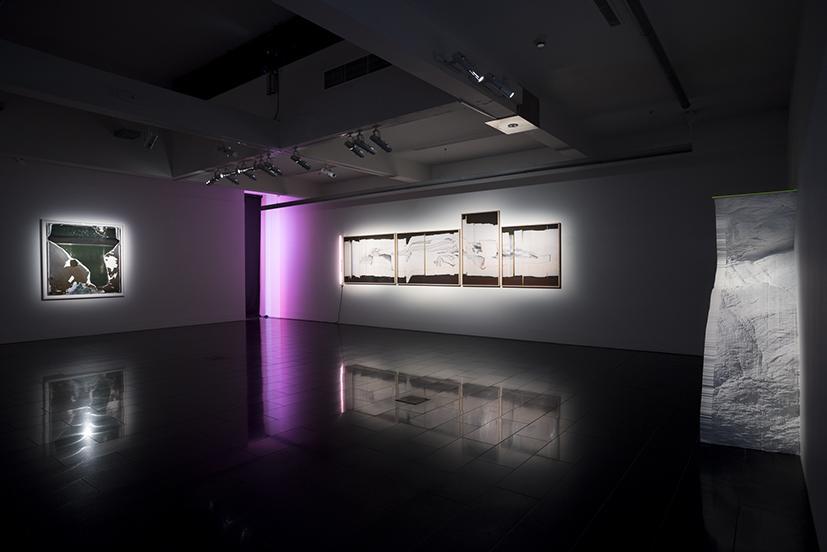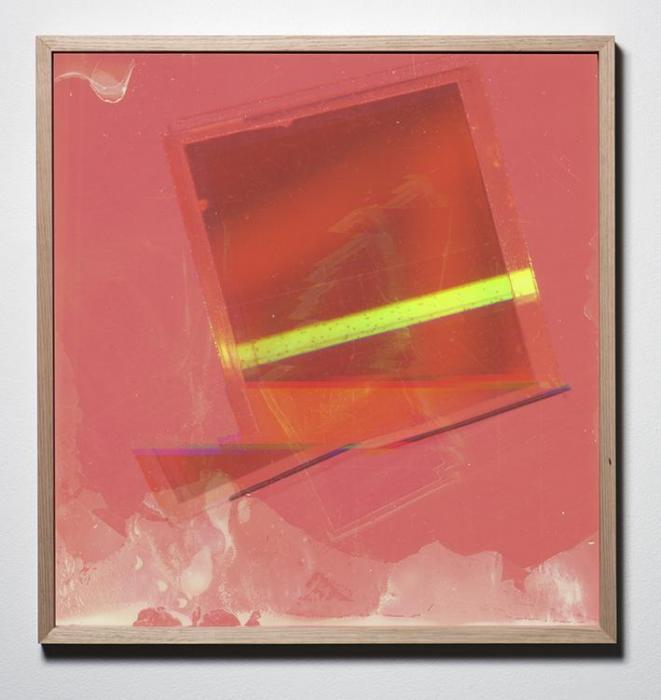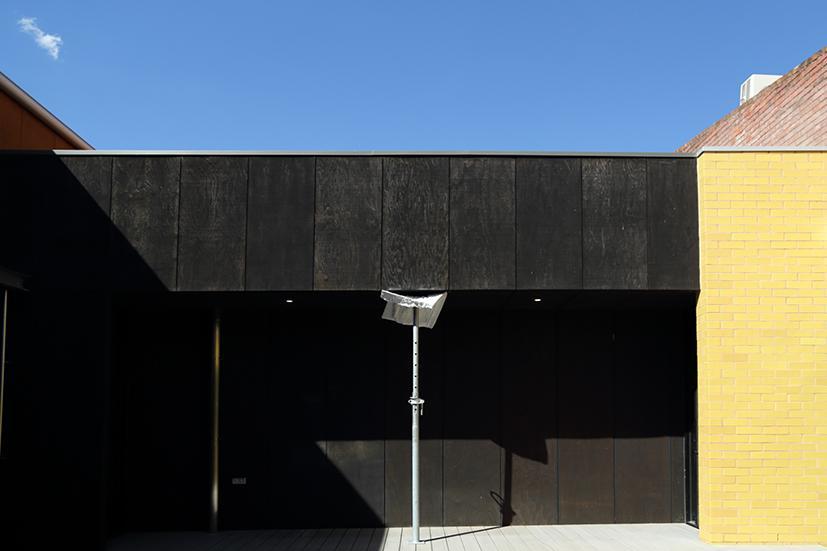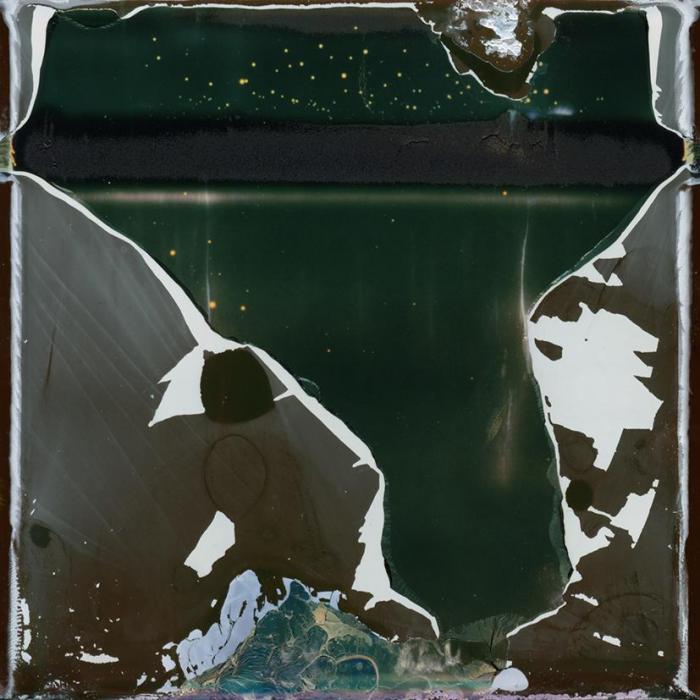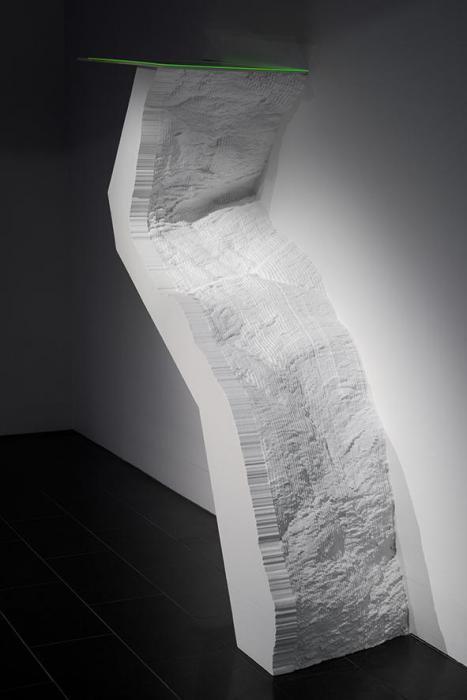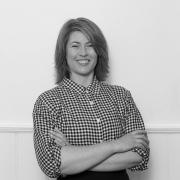A Residency on Earth
Artists have long used Earth as the matter from which to create. To carve, to manufacture pigments and represent mysterious forces of life the Earth itself contains, the prima materia – the formless base of all matter. Land artist James Geurts borrows the measuring tools of a geologist to interact with and present the Earth and its hidden mysteries underneath the city of Bendigo. The result is the body of work Seismic Field. He maps, sculpts and measures formations both ancient and man-made. Unlike a geologist he allows the unpredictable interaction of forces to direct his creative process. ‘Man is the measure of all things: of the things that are, that they are, of the things that are not, that they are not.’(1)
Once Bendigo was the richest city in the world and the architecture still stands as testimony to this heritage. It was the gold mining that generated wealth and a reason to establish a community. A maze of mines, of mine shafts and tunnels remain under the city to this time. It is not often I give thought to what is under my feet or when I will return to the Earth. My family and I collect stones on our bush walks and imagine together the history a stone might contain and how it was formed. ‘Stones touch human beings because they suggest immortality, because they have so patently survived.’(2)
James won the 2016 Georges Mora Fellowship and research residence with La Trobe Art Institute (LAI), Bendigo Victoria. He worked on-site in Bendigo to produce Seismic Field, which brings to surface geological forms and the measuring tools our modern society use to analyse and categorise what is underneath us. He has chosen to make this work allowing the intervention of ‘weather, temperature, force and the pulse of the body [to] disrupt the form and colour field, blurring the lines between geology and technological praxis.’(3) In a recent interview James states, ‘... our relationships with the landscape are changing. How we work with it—with technology, economically and politically.’(4) Earth is buried beneath metal, concrete, asphalt and plastic. So few people in our community remain in touch with the Earth in modern day-to-day life.
Dominating the longest wall of the gallery space is a work on paper called Seismogram.(5) It is a panel of scanned drawings lit up with a fluorescent light beaming fractures of rainbow spectrums between lines drawn, scanned and printed. James sourced old maps showing unused mine shafts near the gallery and walked to where the locations of the mines are now hidden. They are buried by the evolving construction of a regional city—its economy and society no longer driven by the rush of gold. ‘The (gold) reefs ran generally north-south underneath Bendigo. The landscape was dotted with poppet heads and mine workings. In summer the air was laden with dust.’(6) At one point in time every person living in Bendigo was connected to the world underneath their feet; digging in it, dreaming of the promised life it would bring and breathing its upturned particles into their bodies.
James generated drawings at the unused mine shafts and amalgamated them into a major work on paper. His chosen process of creating for Seismogram made me think of local central Victorian John Wolseley—who sees himself ‘...as a hybrid mix of artist and scientist; one who tries to relate the minutiae of the natural world—leaf, feather and beetle wing—to the abstract dimensions of the earth’s dynamic systems.’(7)
The collection of drawings from the mining sites formed the foundations of Seismogram. They were then scanned by a reconfigured scanner where the ‘...pulse of the hand and James’ breathing, created slight movement, a colour abstraction... dust and atmosphere fuelled further abstraction in the way the exposed light of the scanner processed the drawing.’(8) The refraction of light upon the paper is fluorescent highlighted, exposing the elements of the creation that we see and experience. Perhaps they are hot spots or forces that are randomly highlighted and revealed because of the light, because of the technology, because of man measuring and witnessing.
Fluorescent lighting tubes and florescent highlights are subtly repeated many times in Seismic Field. James’ major sculptural work Rift Margin balances a strip of fluorescent green acrylic on top of its sturdy form. It is a 3D scan from exposed geology, Ballerstedt’s open cut, New Chum anticline at Victoria Hill. The rift is inversed and realised into physical form using fabricated polycarbonate and plasterboard. Rift Margin is like a pre-historical stone monument, not separated from its social context—its vertical presence and its meaning, its story of origin is a mystery to modern man. Yet Rift Margin holds special geographical and social meaning to the local people, because it too is from this place. Still the viewer asks questions like—‘What created the rift? Why is this structure here? Why is it highlighted?’ The unknown but known are delicately present in James’ work. In his field of investigation he patiently allows the push and pull of elements to direct his work and for his audience to encounter them and interpret them.
In the adjoining gallery, Core Composition is an installation of objects James has found and borrowed from the gallery itself and a local geologist. Diagonally along the length of the space is a site core sample, with geological chalked markings and measurements from its origins, balanced upon a length of lit up florescent lights. Some fragments of the core sample are arranged on the floor as if they have tumbled from their slim platform of florescent light tube—moved by some unknown force, perhaps the brilliance of the light itself. Was it a silent slow moving unseen energy, or knocked by a gallery viewer or even the artist themselves?
James has brought to the surface the underground monuments of a mining community, long forgotten and removed from the people now living here. Captured and exhibited to be seen and engaged with, using geological technology and the discovered elements of the locale—found lights, maps and rocks, with the artist composing them together.
Measuring, charting and the artist himself are the energy that brings this new field of research and knowledge of the Bendigo region landscape to glorious resurrection—a record of the Earth at this point of time by a man and his relationship to it and his chosen tools and method of measuring.
(1) David Bostock, Plato’s Theaetetus, Oxford, 1988.
(2) Lucy Lippard, Overlay Contemporary Art and the Art of Prehistory, New York: The New Press, 1983.
(3) Seismic Field Exhibition Catalogue Statement 2017
(4) http://www.abc.net.au/radionational/programs/booksandarts/james-geurts/6...
(5) A seismogram is a graph output by a seismograph. It is a record of the ground motion at a measuring station as a function of time.
(6). http://www.victorianplaces.com.au/bendigo
(7) http://www.johnwolseley.net/
(8) Notes supplied by curator Kent Wilson

%20James%20Geurts%202017-itok=nBWYTy4I.jpg)
%20James%20Geurts%202017-itok=voMyjxzl.jpg)
